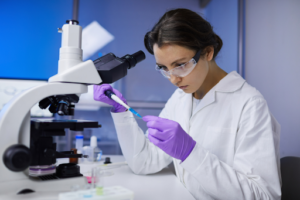What Are The 4 Stages Of Drug Development?
There are numerous medications on the market, and more are being developed all the time. With so many medications out there, getting one approved may seem to be simpler than it is. Developing new drugs is in fact a big job. This stringent procedure ensures that drugs are effective and safe enough to be sold to many people. But, precisely, what has to be done in order to produce new drugs?
The drug development process is divided into four distinct phases. From the first research until FDA approval, these steps contain all which needs to be done to bring new medications to market. Here’s a look at what each of the four phases of drug development entails:
 Discovery And Development
Discovery And Development
The discovery process is the initial stage in medication development. When new insights and technology become accessible, new therapies for illnesses can be discovered. There might be thousands of distinct compounds which will be whittled down over time. The development phase might begin after the most promising molecules have been identified. Many other things must be considered throughout the development process. To name a few, this includes understanding more about what a drug’s dose should be, how effective it is, and probable adverse effects.
Preclinical Research
Before a medicine can be administered to humans, preclinical research must be completed, since it may have the potential to cause major health concerns. This is done to check that the dose is appropriate and that no toxicity is present. Testing may be done both in vitro and in vivo during preclinical research. Medication testing on animals, for example, may be done at this stage before a drug is administered to humans.
Clinical Research
The clinical research stage of drug development starts when preclinical research is completed, and medicine is ready to be tested on people. Clinical trials are the only method to know for sure how a medicine will affect a person’s body. Clinical research planning may require a lot of effort such as determining how many individuals will be involved, how long testing will run, and what sorts of evaluations will be carried out during this stage. And within the clinical research stage, everything must adhere to FDA guidelines.
FDA Review
The developer may now submit their study to the FDA once preclinical and clinical research proves that the medicine is safe and effective. Of course, receiving FDA clearance is crucial to putting a new medicine on the market; therefore, the FDA review is a very important element of the drug development process. A developer must always submit a New Drug Application with complete information about their drug in order to have it evaluated. All of the developer’s results from the previous phases are included in this application. The FDA has six to ten months to finish its investigation. The FDA may have further concerns or demand more research before approving a new medicine.
The FDA then continues to monitor a drug’s safety even after it has been approved. They keep an eye on how the medicine is promoted (and if any problems occur) to guarantee that it is safe for the market. The FDA has the authority to intervene if a medicine has difficulties.
Your experts at Rondaxe are always pleased to discuss pharma development. Visit us online or give us a call at (315) 469-2800 today.
< Previous | Home | Next >

